Welding is undoubtedly getting a more popular and used profession across the globe, but the hobbyist market might have seen the most considerable expansion. Today’s welding machines are affordable and quite capable, so it is no surprise many have tried welding.
However, most beginners and hobbyist welders struggle to achieve the perfect weld at first. That’s why we compiled this detailed article to explain the characteristics of a high-quality weld and compare good weld vs bad weld.
What Are The Properties Of High-Quality Welds?
Good weld quality is determined prior to the welding process, and in industry, it is usually selected by the welding fabrication drawing or blueprint. The welding fabrication blueprint provides welding symbols that strictly determine weld sizes and other dimensional requirements such as length and location.
However, some common characteristics identify the perfect welds: even metal distribution, lack of slag, no welding discontinuities, and tight and leakproof weld with high tensile strength. As a result, welds should have a consistent, smooth, and uniform appearance. In addition, a good weld will have a color-free appearance that indicates no oxidation has occurred.
MIG welding process and MIG Welds
Gas metal arc welding is one of the most straightforward processes to master, meaning you can achieve good MIG weld with little to no effort. This process utilizes a welding gun that feeds a wire electrode that acts as the filler material to join two metal pieces.
Ease of use has made MIG welding a go-to welding process in your everyday home repairs and DIY projects, but many beginners struggle to make a good weld.
A good MIG weld is easy to distinguish. The weld is straight and uniform with no slag, cracking, or holes. There are no breaks in the weld, it isn’t too thin and there are no dips or craters in the bead.
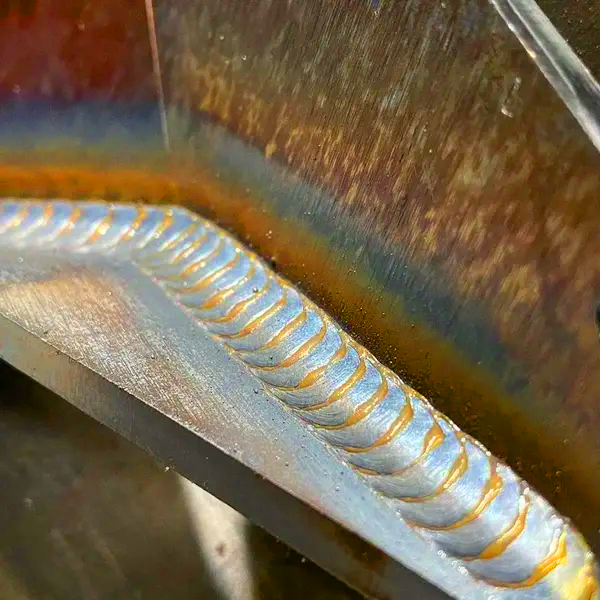
Unlike a TIG weld, a MIG weld has no specific pattern as it is as smooth as possible. On the contrary, poor welds have holes, show a lack of strength, and don’t seem uniform. Let’s take a look at a visual representation of good and bad welds.
Keep in mind that the flux shielded arc welding process is quite similar to MIG welding, so the defects and poor and good welds result from similar mistakes. However, since the flux protects the electrode wire, there is no fear of porosity caused by a lack of shielding gas. However, flux core welding processes is somewhat hotter, so tackling thin materials might commonly result in a burn-through.
Good MIG weld and Bad MIG Weld
To achieve good metal inert gas welding results, you will need to be aware of the wire feed speed, voltage, shielding gas, and travel speed. Manufacturers usually recommend each of these factors for different material thicknesses, but if you get any of them wrong, you might deal with poor welds.
Here are visual representations that show how wire feed speed, voltage, travel speed, or lack of shielding gas affect the appearance of the weld.
Good and uniformed MIG welds that pass visual testing:
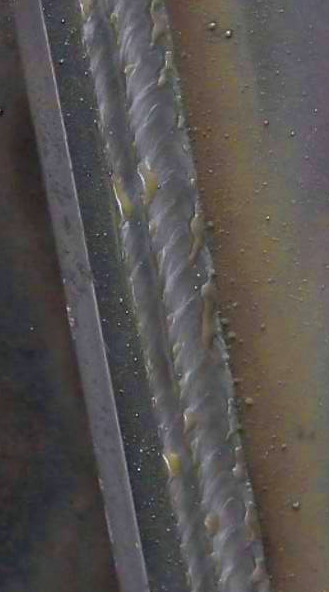
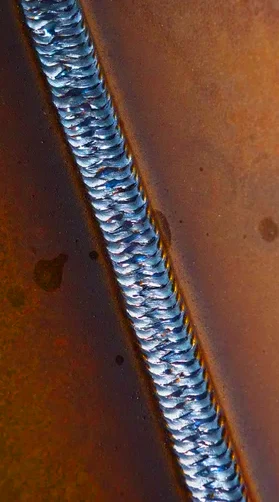
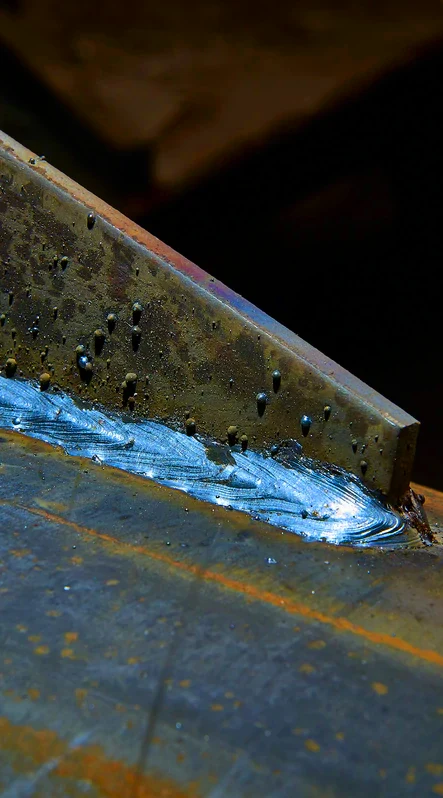
MIG welding mistakes and in general bad welding beats:
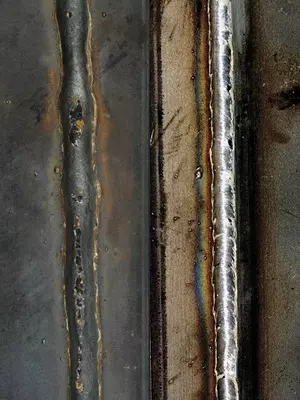
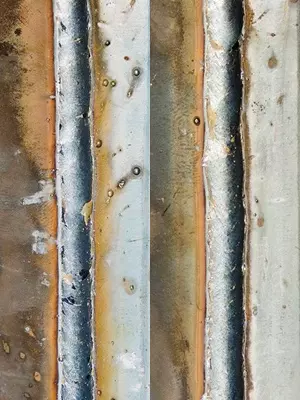
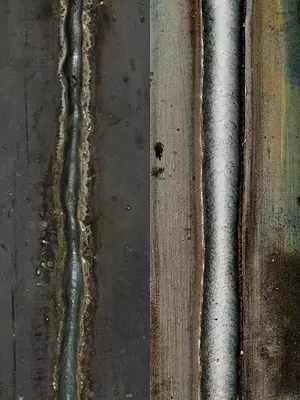
Stick Welding and Stick Welds
Shielded metal arc welding is one of the most economical welding processes and is widely used for home and on-field repairs.
This welding technique is versatile enough to work with a range of materials, including alloy steel, carbon steel, stainless steel, iron, nickel, copper, and even aluminum.
A good stick weld is easy to notice, as it is straight and uniform. The thickness doesn’t change drastically and there is no spatter. In addition, there are no holes, breaks, or cracks in the bead.
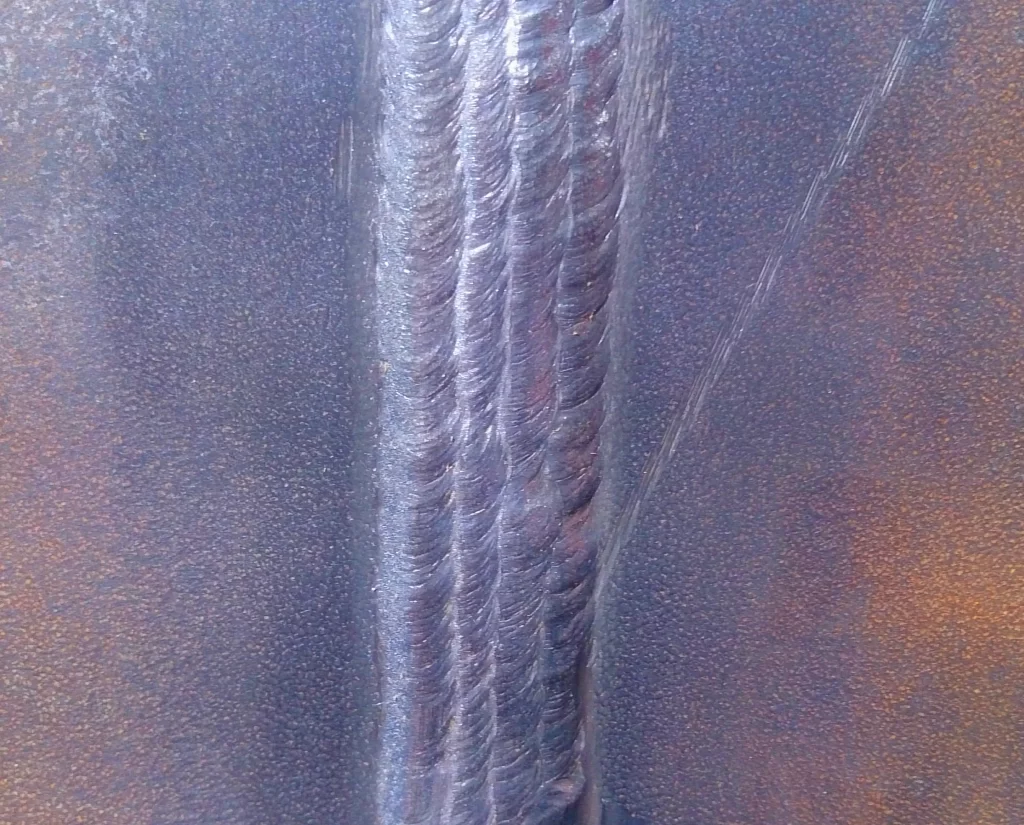
Good Stick Weld bead and Bad Stick Weld Bead
The appearance and quality of stick welding beads are affected by several different factors. Most commonly, these are current, voltage, and travel speed. If you’re welding with an amperage set too low, your electrode will be especially sticky when striking an arc.
Meanwhile, too high amperage will make the puddle excessively fluid and hard to control. This can lead to excess spatter and a higher potential for an undercut. The optimal Stick arc length is the same as the diameter of the electrode.
A short arc will create greater potential for the electrode to stick to the base material, and too-long arc results in a spatter with a possible undercut. Let’s take look at the visual representation of good and bad Stick welds.
Good finishing welds that passed inspections on plates and pipes:
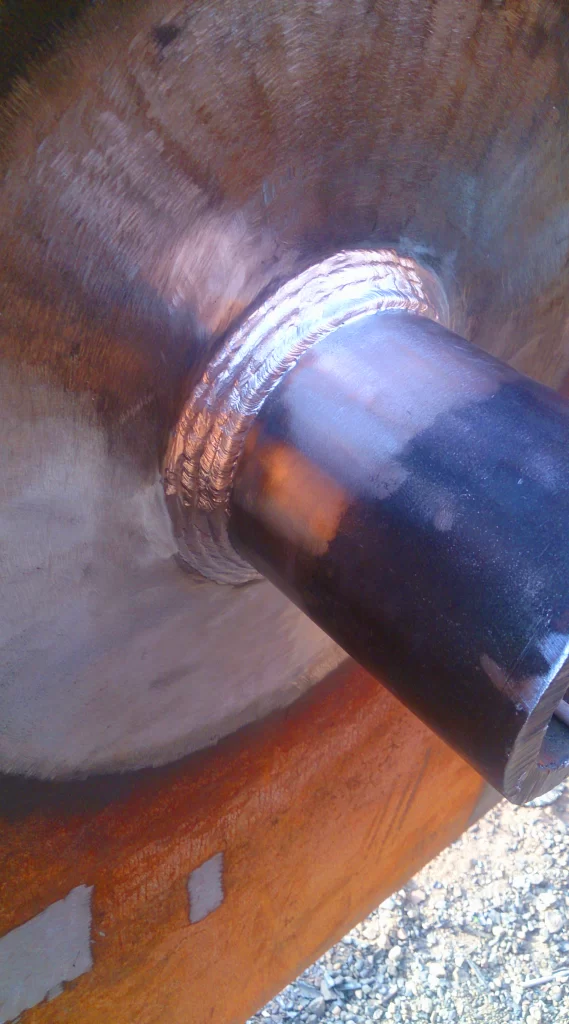
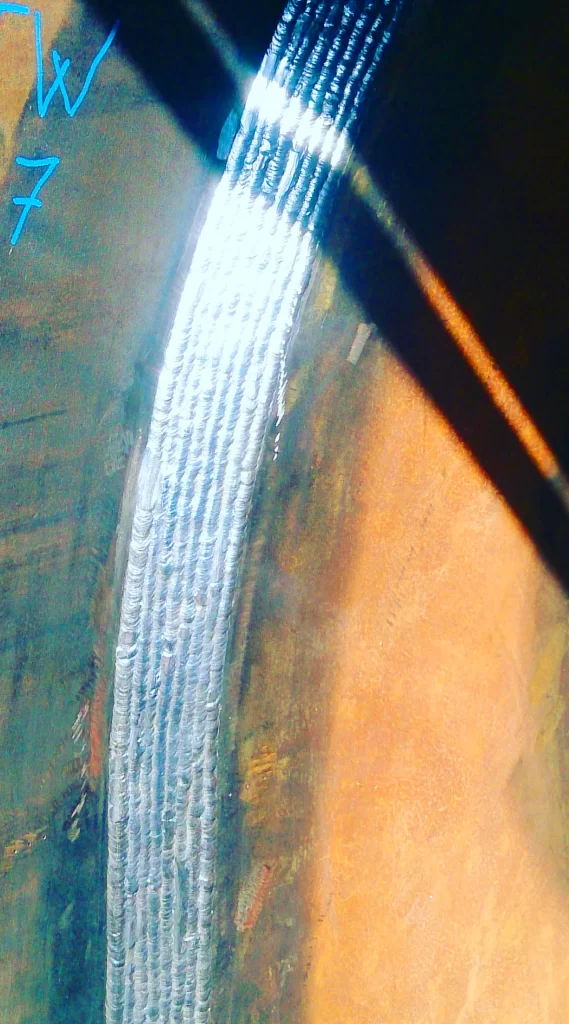
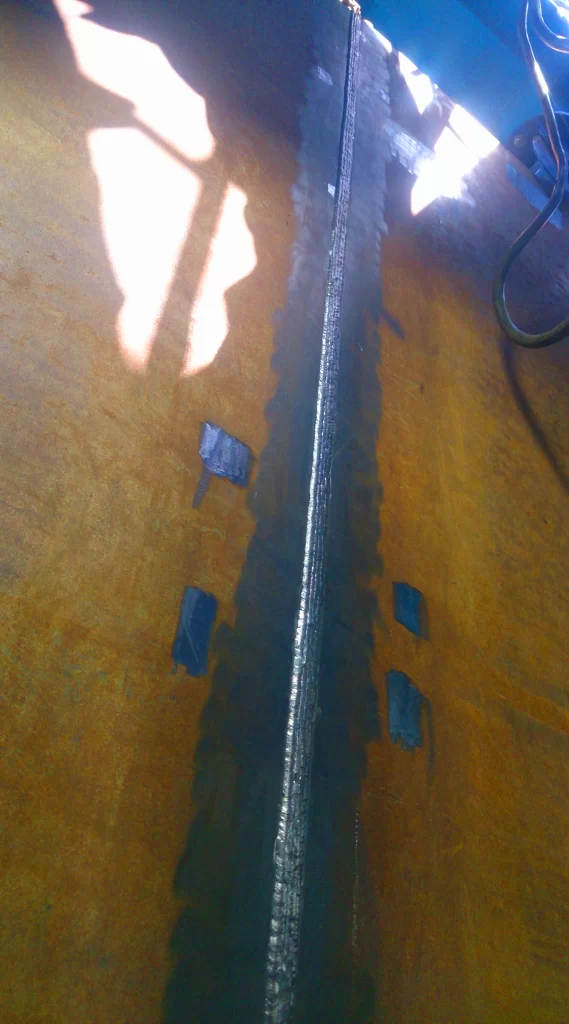
Bad welds and common mistakes:
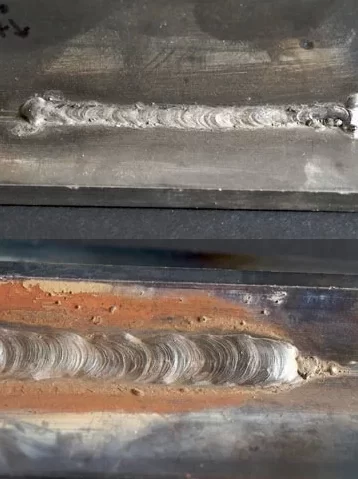
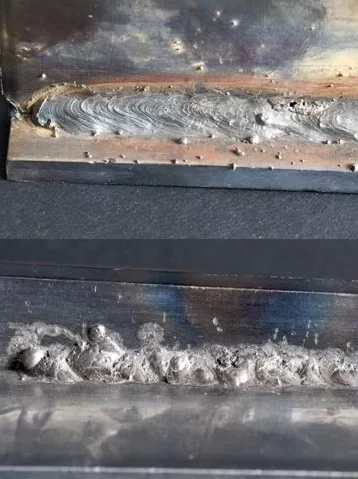
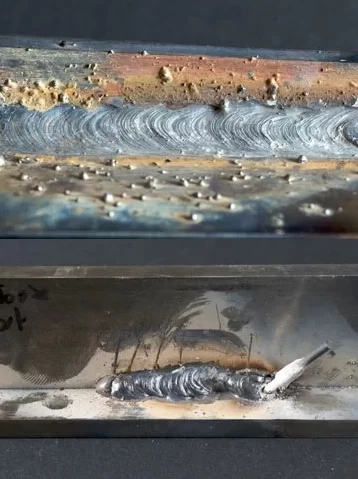
TIG welding and TIG welds
Gas tungsten arc welding is one of the most complex and challenging welding processes to master. Beginners can agree that achieving a good TIG weld might be a nightmare, but it is one of the most suitable methods for welding delicate aluminum parts.
A clean TIG weld is one of the prettiest welds you’ll see.
Tungsten inert gas weld is made of many tiny welds neatly layered on top of each other, which look like stacked dimes. As a result, there is no slag or burnout.
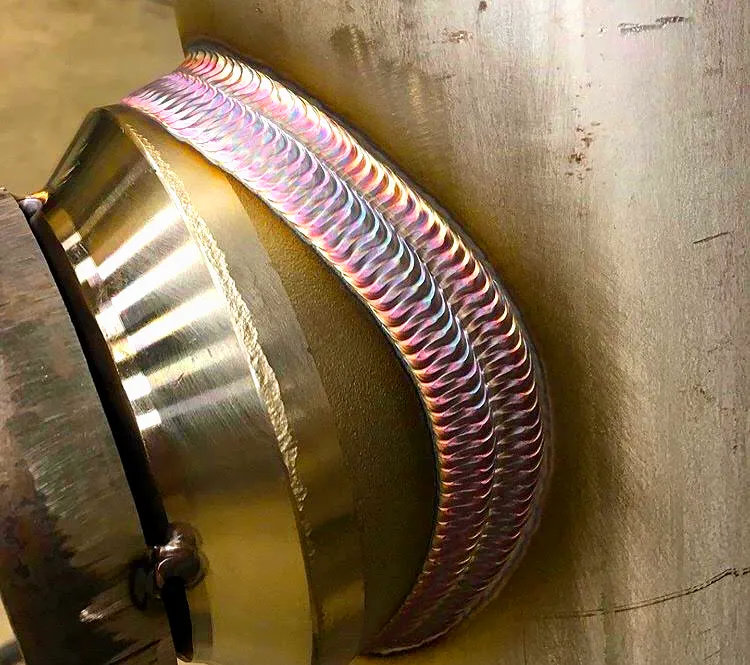
Even though different welding methods yield different results, everyone can agree TIG produces aesthetically pleasing welds. On the other hand, a bad weld is pretty easy to notice as it is very wide with no distinct pattern to it.
Good TIG weld and Bad Weld
Many different factors can affect the appearance of the TIG weld, and that’s the main reason TIG welding is considered challenging. Most commonly, issues happen due to incorrect type or size of filler metal, lack of weld preparation including cleaning, and incorrect amperage.
Since we explained how each one of these factors affects the weld appearance, let’s look at bad welds.
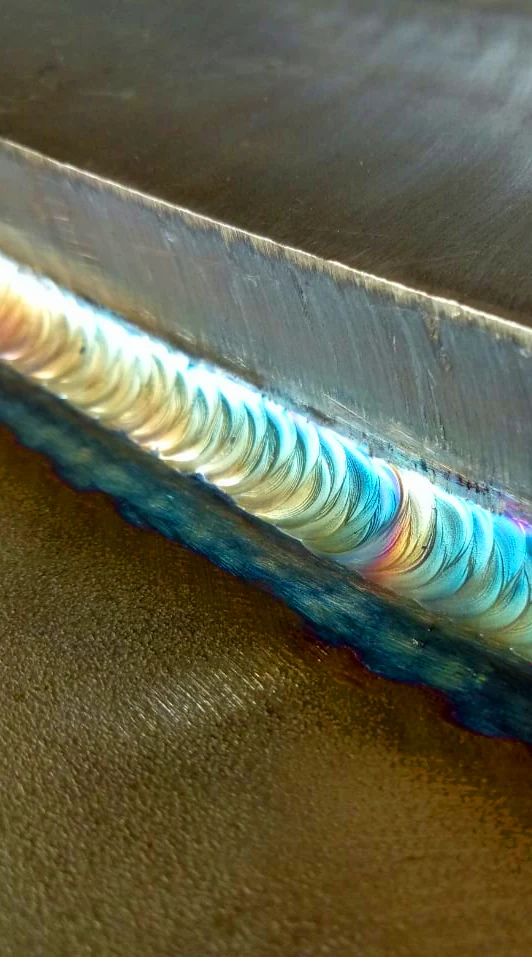
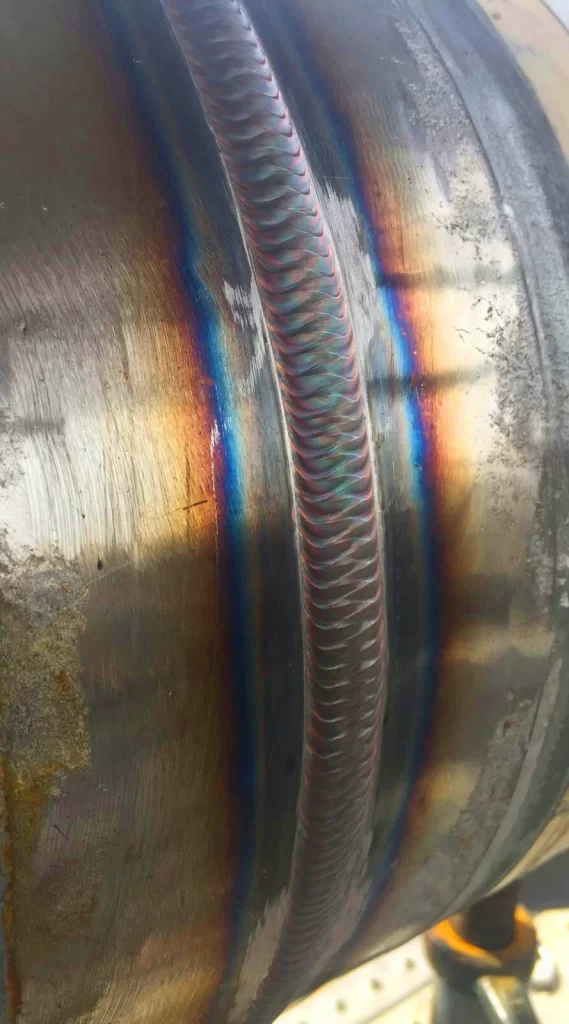
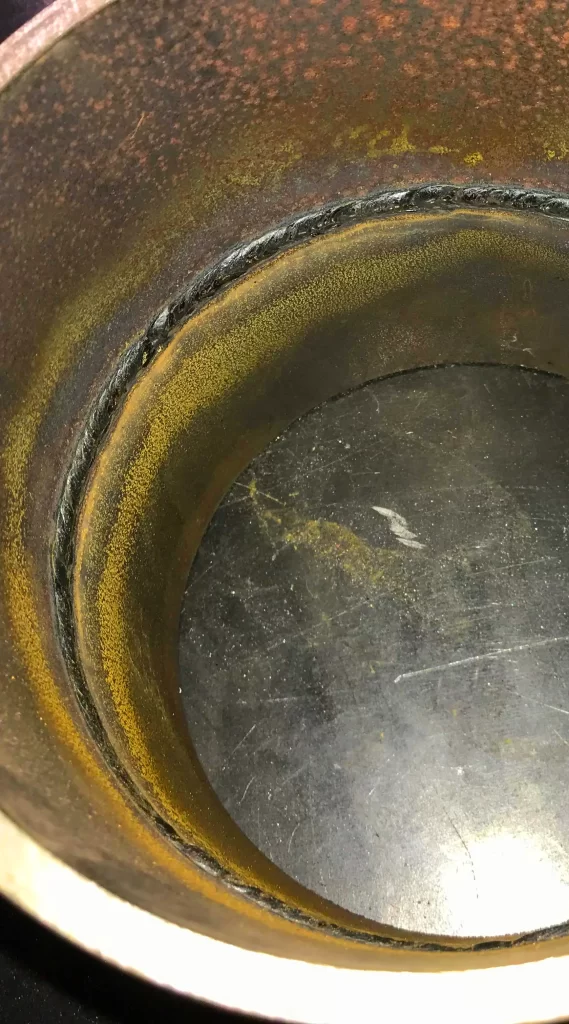
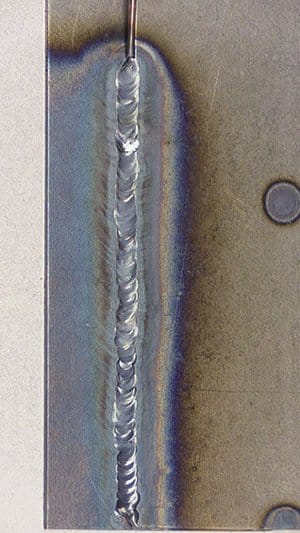
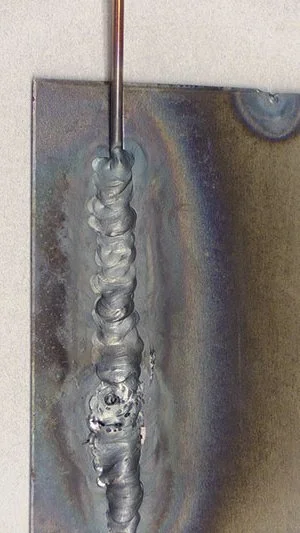
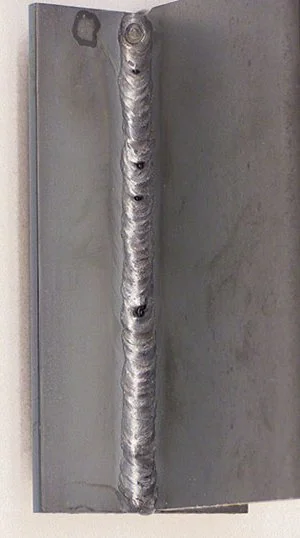
Oxy-acetylene Gas Welding and Weld Beads
Besides Stick welding, oxyfuel gas welding is one of the most economical processes. Even though it was widely used in the past for joining copper alloys, the latest welding methods have surpassed it. In this process, oxygen and acetylene gas produce heat input that melts the base metal, joining autogenous or adding filler metal.
Regardless of the fact that OFW is not widely used today, a professional welder can still produce quality welds. For example, a good oxyacetylene weld includes a uniform bead with no holes or globules of melted metal.
Good and Bad weld Produced by Oxyfuel Welding
The appearance of the oxyfuel welding line can be affected by several different factors, such as flame type, weld metal, dirt on the weld surface, and welding torch manipulation. Nonetheless, here are some examples of good and bad welds.
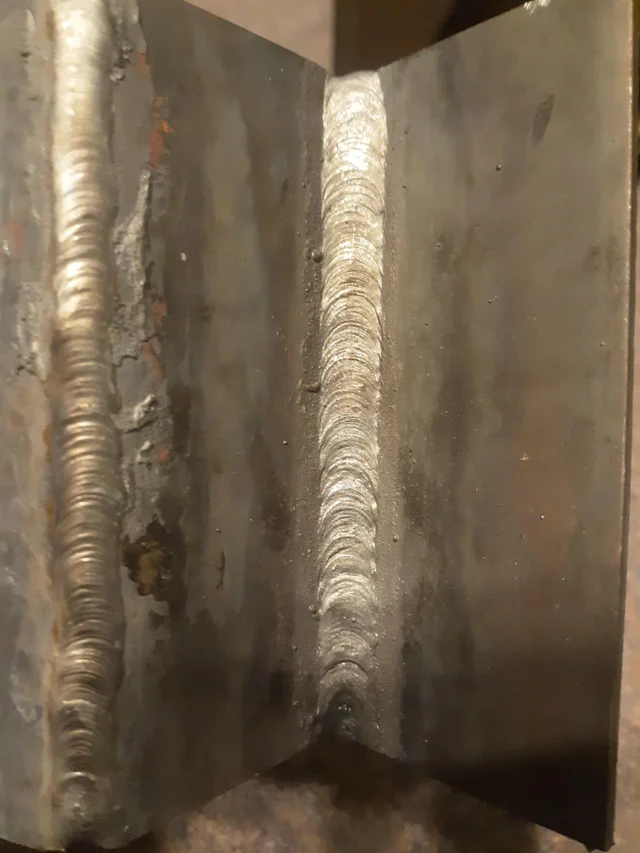
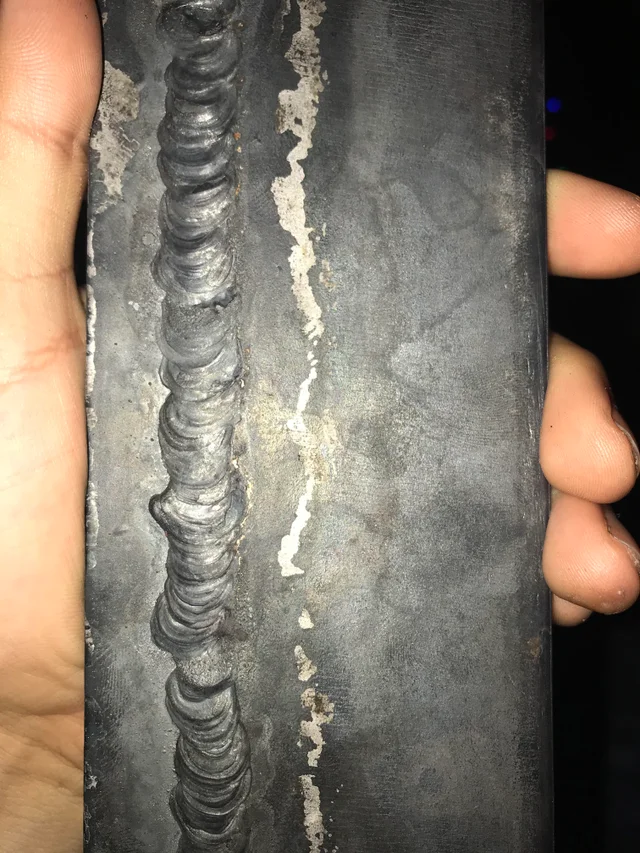
Good Weld Vs Bad Weld – What Factors Affect The Weld Quality?
Many factors can affect the weld quality, and they can vary in the welding process. However, we will explain the crucial factors that are responsible for either good or a lousy looking and inadequate weld.
Most commonly, voltage, travel speed, the current selection, wire electrode feed speed (for MIG welding), filler metal size, and shielding gas distribution can affect the weld quality.
Selecting Proper Voltage
The first thing you should know is that voltage determines the height and width of the bead.
However, too much voltage is marked by poor arc control, inconsistent penetration, and a turbulent weld pool that fails to penetrate the base material consistently.
On the contrary, too little voltage results in poor arc starts, control, and penetration. It also causes excessive spatter, a convex bead profile, and poor tie-in at the toes of the weld.
To get the voltage right, you should follow the manufacturer’s recommendations for the given material.
If there are none, you should practice on scrap metal until you get it right.
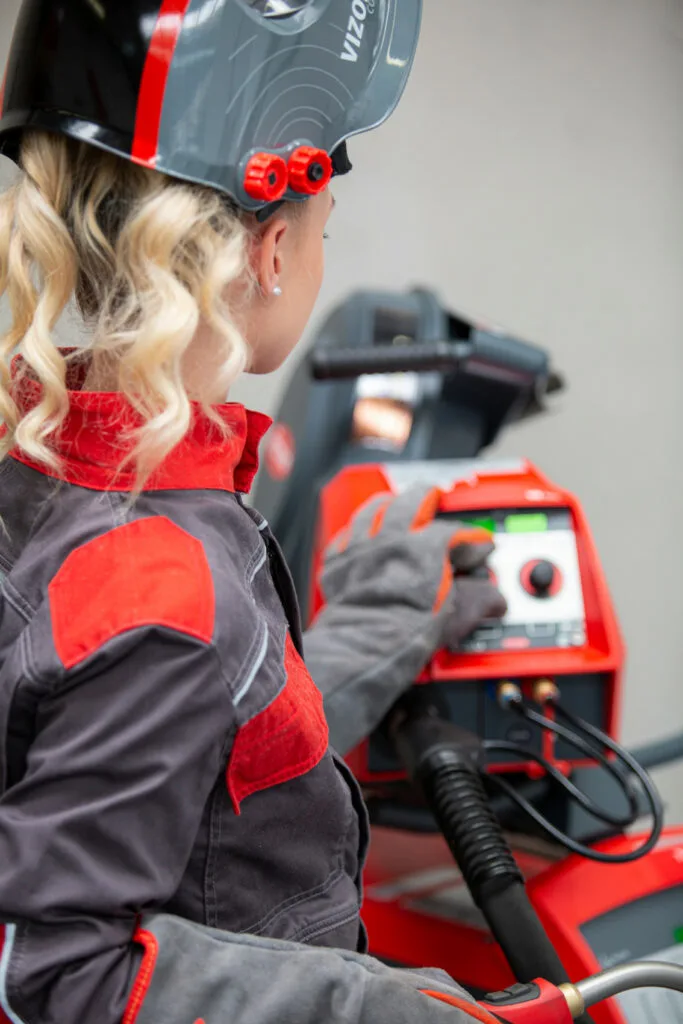
How Does Travel Speed Affect The Weld Quality?
Your welding travel speed should allow you to keep the arc in the leading one-third of the weld pool.
Too fast travel speed will result in a narrow, convex bead with inadequate tie-in at the toes of the weld, insufficient penetration, and an inconsistent weld bead.
Meanwhile, traveling too slow introduces too much heat into the weld, resulting in an excessively wide weld bead and poor penetration. On thinner material, it may also cause burn-through.
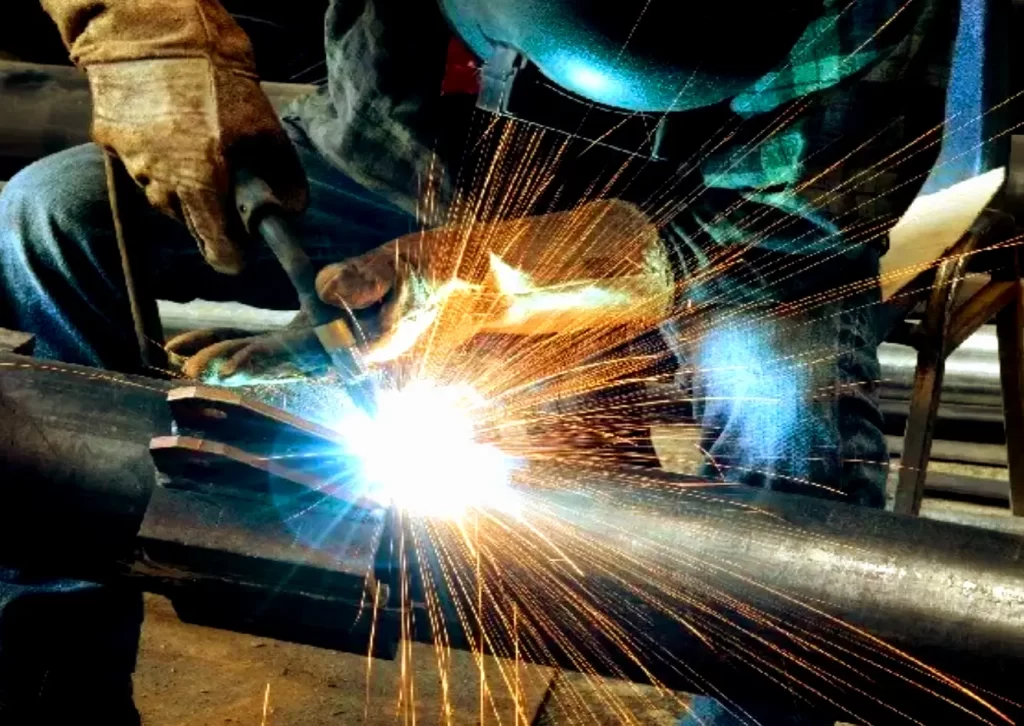
Wire Feed Speed/Amperage
Setting the wire feed speed or amperage too high (depending on what type of machine you’re using) can cause poor arc starts, and lead to an excessively wide weld bead, burn-through, excessive spatter, and insufficient penetration.
Meanwhile, a narrow, frequently convex bead with poor tie-in at the toes of the weld marks insufficient amperage.
Shielding gas and Cleanliness
When dirt or oil on the base material vaporizes and forms a gas pocket in the weld pool, leading to defects such as porosity. The porosity and pinholes easily identify a lack of or inadequate shielding gas in the face and interior of the weld.
Breeze or draft may blow the shielding gas away from the weld pool and cause porosity, so you make sure to protect it. In addition, higher gas flow can create turbulence, which pulls the outside atmosphere into the weld pool, leading to contamination.
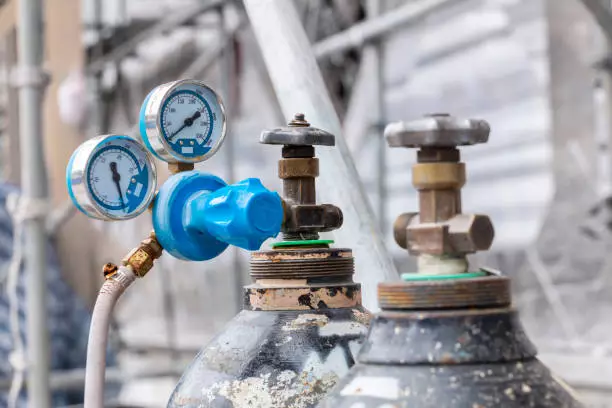
Filler metal Selection
One of the primary goals of weld preparation is matching the TIG filler rod, MIG filler wire, or stick welding electrode composition to the base metal. Besides compositions, welders should match the thickness of the filler according to the root opening.
Keep in mind that an oversized filler rod will not generate enough heat energy to raise its temperature fast enough to allow it to melt smoothly into the weld pool. On the contrary, the too-small rod will be consumed so quickly that a consistent weld bead will not be possible either.
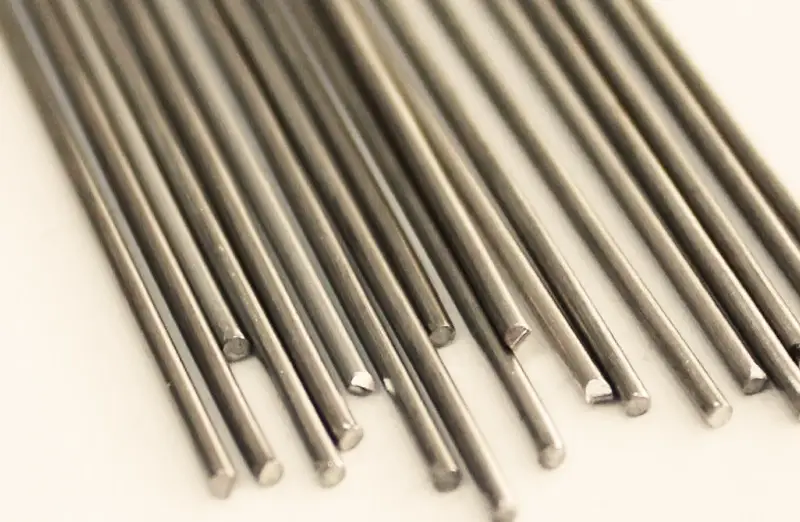
Manipulation of the Electrode
Sophisticated welding techniques such as TIG welding require quite skilled electrode manipulation. Even though each welder can develop its style, electrode manipulation is crucial when willing more extensive root passes.
Even though you can use the straight technique for more minor welds, lousy manipulation in the thicker openings will result in the poor-quality weld.
Resources
- https://www.millerwelds.com/resources/article-library/miggmaw-101-setting-the-correct-parameters
- https://www.millerwelds.com/resources/article-library/five-steps-to-improving-your-stick-welding-technique
- https://www.thefabricator.com/thewelder/article/arcwelding/tig-welding-when-looks-matter
- http://www.valleybox.com/material-handling-equipment-blog/how-to-spot-a-good-weld-vs-bad-weld-custom-metal-fabricated-products





